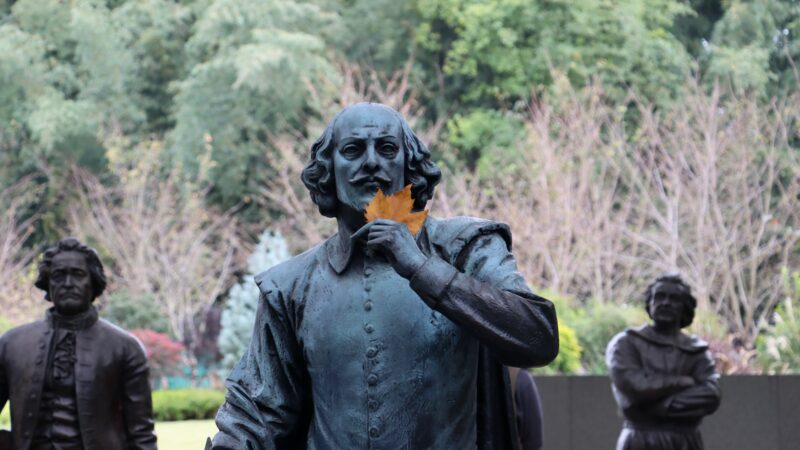In previous articles, I’ve been too harsh on the people who want to define a woman as ‘an adult human female’, and probably too harsh on people who genuinely want right-wing ideas to flourish. This time, I want to focus on the beliefs of the modern left and rather than attack them outright, provide an analogy that hopefully makes things easier for the right to understand where they’re coming from – I’ll leave the attacking to you at that point.
Despite the refusal of this publication to use a certain word, a refusal I helped in writing and a refusal I still stand by – when words are created or used there’s often a reason for it. The speaker, at the very least, feels a need to distinguish this specific thing from the stuff that came before it. And there is something different about the modern left than the left of the past – although the difference is one of intensity, rather than of content. The trend of Western societies from the French revolution onwards has been an insistence on a harsh dualism between the external material world, and the internal world of the self. The material, by its nature, has no moral character. Few Western societies today affirm a creator, and in insisting on that creator: a rhyme and reason to the way the world is. After all, if God exists and designed our world – the fact there is day and there is night suggests that some ultimate Being who judges us had a reason for creating such a cycle, and we can go from observations in the material world to moral statements by resolving those statements to that Being.
The secularism of modern life has fairly resolutely burned that bridge. Today, we rely on appeals to notions of reason to affirm or deny moral statements. This marks a change not just in how we consider the nature of morality, but the nature of our very existence. Whereas before there was some notion of the absolute which subsumed not just the material world, but each subjective experience of that world. Now there is just a sterile material reality, with internal projections of order onto that reality that we call morality. In the former case, limitations on the subjective experience with reference to the material are to be expected. After all, both are facets of a wider design. In the latter case, limitations on the subjective experience with reference to the material are not only absurd, but denials of the necessarily free internal world of the self.
Perhaps this is all too philosophical and abstract. Perhaps it is easier for me to refer to sentiments you’ve likely heard before. One such sentiment would be the notion that being a woman means different things to different people. Another would be that being a woman is nothing more than identifying as a woman. Both of these presuppose the aforementioned harsh binary between a physical, material, world that (in and of itself) tells us nothing about how it should be described, and an internal world of the self that projects descriptions onto it. We can provide descriptions which allow us to make predictions, and that’s what we call science – but what exactly we ought to predict, and the emphasis we place on those predictions is not something that can be resolved to the material world.
For example, nothing about the fact we can describe the human species as male and female for the purposes of reproduction suggests that human reproduction is good (this is what anti-natalists believe,) or that we should assign clothing, roles, attitudes, separate changing rooms/sports and beliefs to those categories (this is what Queer Theorists believe.) With this disconnect, gender becomes something that has no coherent reference to the material world. We can associate them if we please, but nothing about that association is absolute. At best, it’s the general aggregate of behaviours that come about due to biological impulses – which would suggest that anyone who imitates those behaviours and makes themselves resemble the biological makeup of who they wish to be, is in effect whatever they want to be.
When understood this way, it’s more accurate to understand the conception of gender from the modern left as being closer to a subculture than an unmoving category that one falls into and cannot escape. You can become a woman as easily as you can become a goth. Wear the right things, act the right way, listen to the right music and call yourself a goth and what right does anyone else have to deny you of that? The same is true in modernity of womanhood. A woman is whoever says they are a woman, and just as a goth remains a goth when they listen to classical instead of metal, when they wear no make-up instead of eyeshadow, or take out their piercings instead of wearing them: a woman remains a woman without wearing dresses, acting feminine, or having certain body parts.
Of course, this is me speaking from the perspective of the modern left – but it also demonstrates the convenience of wants between the modern left and capital. It’s easy today to find an endless number of businesses selling masculinity as a product, but why stop there? With an ever-increasing number of genders, there’s plenty of business to be had in creating unique modes of dress for each new grouping. The term “transtrander” got some usage for a while, but missed the mark. People don’t just become trans because being trans is trending, but because transitioning is a trend in and of itself.
The Boomers spent their time transitioning from being a hippy to being a mod, the zoomer transitions from queer, to genderfluid, to man, and back to woman. Each one has their own flag, set of styles, and modes of dress and ways to act and behave. In many respects, this is self-expression taken to its most extreme end, a self-expression which demands not just to express an unchanging identity, but to express the changing nature of identity itself as an extension of self-expression.
“Man cannot remake himself without suffering, for he is both the marble and the sculptor.”
Alexis Carrell
If modernism was the recognition of man as sculptor and creator, and the affirmation that there is no ultimate sculptor and creator to guide his hand, post-modernism is the recognition of man as both marble and the sculptor, and extends the unbounded freedom of self-expression not just to the individual, but to the nature of individuality said person emerges from.



